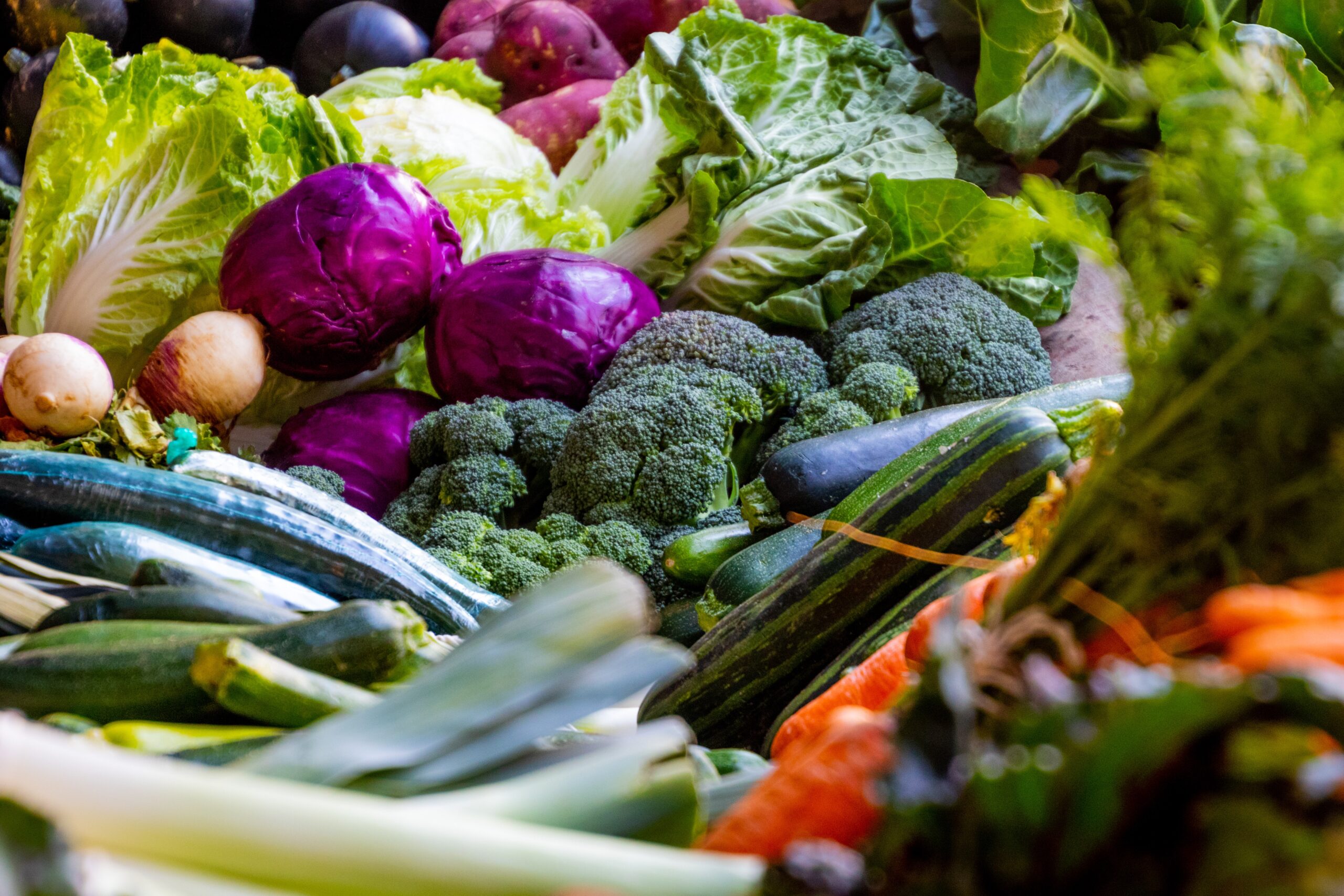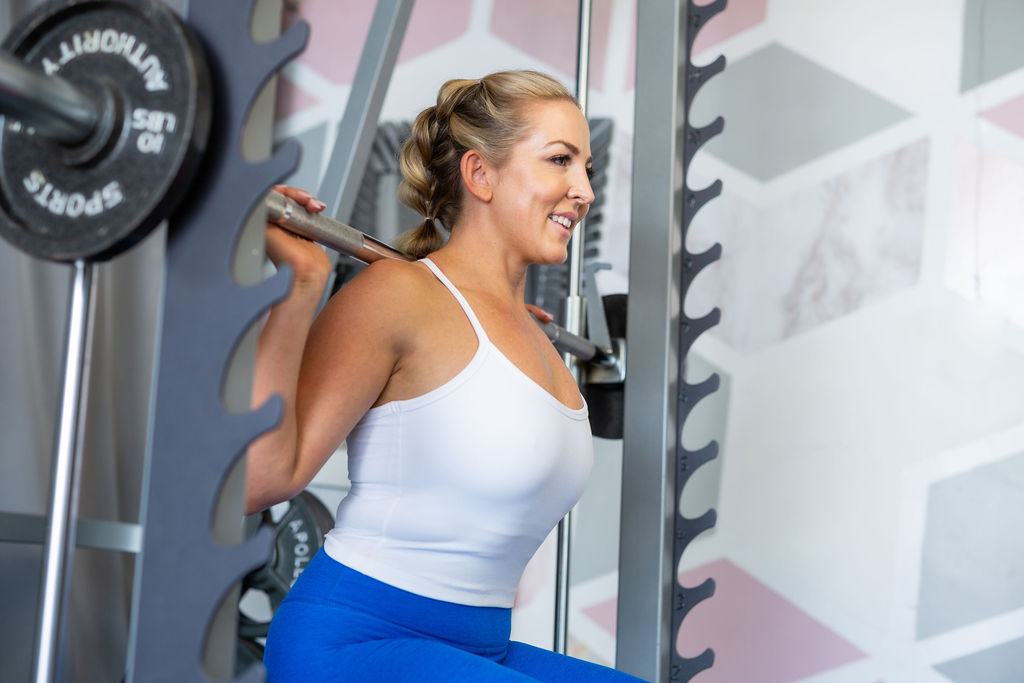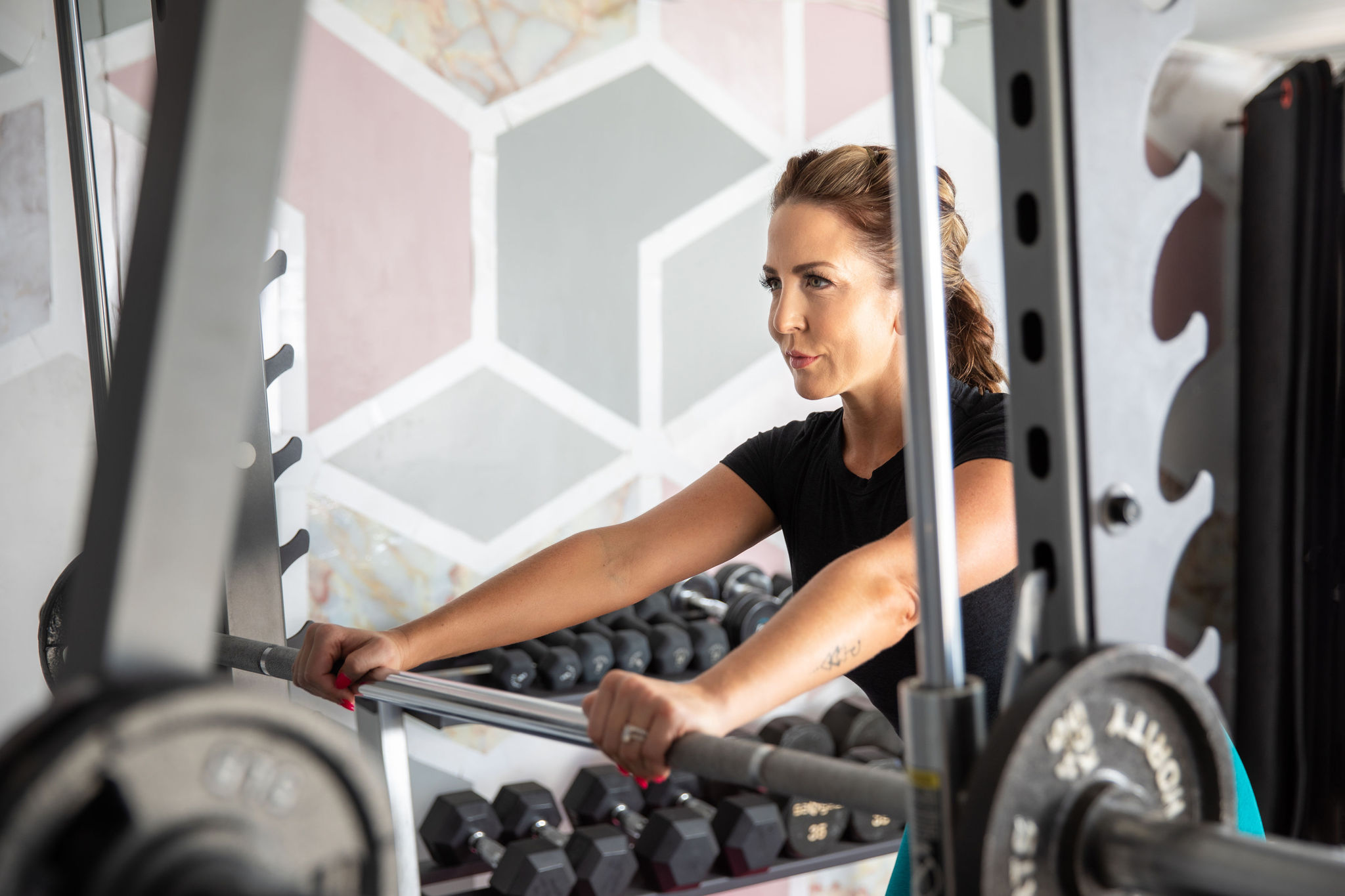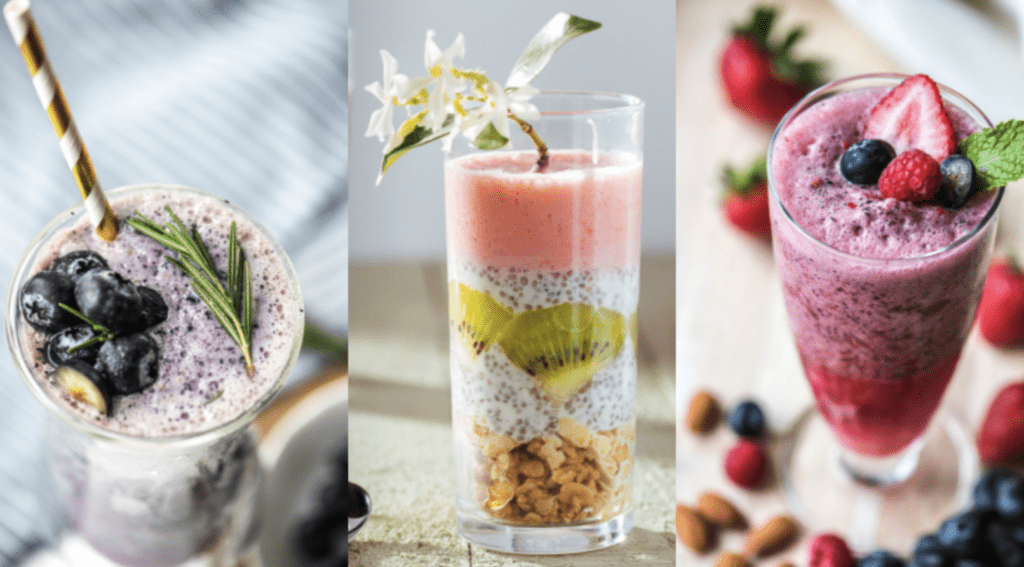Grow Your Glutes: Tips and Exercises for a Bigger Booty
Growing your glutes is a popular fitness goal for many people, and for good reason. Not only can a strong, toned backside improve your physical appearance, but it can also enhance your overall strength and athletic performance. However, achieving this goal requires more than just doing a few squats here and there. It takes a comprehensive approach that includes proper nutrition, effective exercises, and sufficient rest and recovery.
One of the most important things to understand when it comes to growing your glutes is the anatomy of these muscles. The glutes are made up of three main muscles: the gluteus maximus, gluteus medius, and gluteus minimus. Each of these muscles plays a different role in movement and function, and targeting them all is essential for optimal glute development. By incorporating exercises that work all three muscles into your routine, you can ensure that you’re getting a well-rounded workout that will help you achieve your goals.
Key Takeaways
- Proper nutrition, effective exercises, and sufficient rest and recovery are essential for growing your glutes.
- Understanding the anatomy of the glutes and targeting all three muscles is important for optimal development.
- Incorporating a variety of exercises into your routine and tracking your progress can help you achieve your glute growth goals.
The Importance of Glute Training: Grow Your Glutes
As someone who has been working on growing my glutes for a while now, I can tell you that glute training is incredibly important. Here are a few reasons why:
Health Benefits
Strong glutes are essential for good posture and balance. They help to stabilize the pelvis and prevent lower back pain. Additionally, strong glutes can improve athletic performance by increasing power and speed.
Aesthetics
Let’s be real, one of the main reasons people want to grow their glutes is for aesthetics. A well-developed set of glutes can help to create a more balanced and proportionate physique. Plus, who doesn’t want a nice-looking butt?
So, whether you’re looking to improve your health or your appearance (or both!), glute training is definitely worth incorporating into your workout routine. Some of my favorite glute exercises include:
- Squats
- Deadlifts
- Hip thrusts
- Glute bridges
- Lunges
Remember to always use proper form and gradually increase weight or resistance as you get stronger. And don’t forget to give your glutes time to rest and recover between workouts.
Understanding Glute Anatomy
As someone who is looking to grow their glutes, it’s important to have an understanding of the anatomy of the glute muscles. The glutes are made up of three main muscles: the Gluteus Maximus, Gluteus Medius, and Gluteus Minimus.
Gluteus Maximus
The Gluteus Maximus is the largest muscle in the glute group and is responsible for hip extension, leg rotation, and maintaining an upright posture. It’s the muscle that gives your butt its shape and size. This muscle is worked when you perform exercises like squats, deadlifts, and lunges.
Gluteus Medius
The Gluteus Medius is located on the outer surface of the pelvis and is responsible for hip abduction and rotation. This muscle is important for stabilizing the pelvis during movement and preventing the knee from caving in during exercises like squats and lunges. Exercises that target the Gluteus Medius include lateral band walks and clamshells.
Gluteus Minimus
The Gluteus Minimus is the smallest muscle in the glute group and is located beneath the Gluteus Medius. It’s responsible for hip abduction and internal rotation. This muscle is important for stabilizing the hip joint during movement and preventing injury. Exercises that target the Gluteus Minimus include side-lying leg lifts and fire hydrants.
By understanding the anatomy of the glute muscles, you can better target them during your workouts and achieve the results you’re looking for. Remember to incorporate exercises that target each of these muscles to ensure balanced growth and function.
Nutrition for Glute Growth
To grow your glutes, it’s important to fuel your body with the right nutrients. That is why I am sharing my Meal Prep Tips to Make Food Prepping Fun, Easy, and Delicious. Here are some key nutrition tips for glute growth:

Protein Intake
Protein is essential for building muscle, so it’s important to make sure you’re getting enough in your diet. As a general rule, aim for at least 1 gram of protein per pound of body weight per day. This means that if you weigh 150 pounds, you should aim for at least 150 grams of protein per day.
Good sources of protein include:
- Lean meats like chicken, turkey, and fish
- Eggs
- Greek yogurt
- Cottage cheese
- Legumes like beans and lentils
- Tofu and tempeh
Carbohydrate Intake
Carbohydrates are important for providing energy during workouts and helping to support muscle growth. Aim for a mix of complex carbohydrates (like whole grains and vegetables) and simple carbohydrates (like fruit) to fuel your body.
Good sources of carbohydrates include:
- Whole grains like brown rice, quinoa, and oats
- Fruits like bananas, apples, and berries
- Vegetables like sweet potatoes, broccoli, and spinach
- Legumes like beans and lentils
Fat Intake
Healthy fats are important for hormone production and overall health. Aim for a mix of saturated, monounsaturated, and polyunsaturated fats in your diet.
Good sources of healthy fats include:
- Avocado
- Nuts and seeds like almonds, walnuts, and chia seeds
- Olive oil
- Fatty fish like salmon and tuna
Remember to stay hydrated by drinking plenty of water throughout the day. Proper nutrition combined with a targeted workout routine can help you achieve your glute growth goals. Have more questions about what to eat before or after a workout? I will answer all of your questions in my blog: Your Guide to Eating and Exercising: What to Eat Before and After a Workout
Effective Glute Exercises to Grow Your Glutes
If you want to grow your glutes, you need to focus on exercises that target your glute muscles. Below are some effective exercises that you can incorporate into your workout routine. For more information read: Lift, Tone, and Grow: Unleashing the Power of These 5 Booty Building Exercises.

Squats
Squats are a great exercise for building your glutes. To perform a squat, stand with your feet shoulder-width apart and your toes pointing forward. Lower your body as if you are sitting down on a chair, keeping your back straight and your knees behind your toes. Push through your heels to stand back up.
You can make squats more challenging by adding weight. You can use a barbell, dumbbells, or a kettlebell. Start with a weight that you can comfortably lift for 8-12 reps and gradually increase the weight as you get stronger.
Lunges
Lunges are another effective exercise for building your glutes. To perform a lunge, step forward with one foot and lower your body until your front knee is bent at a 90-degree angle. Your back knee should be hovering just above the ground. Push through your front heel to stand back up and repeat on the other side.
You can make lunges more challenging by adding weight. You can hold dumbbells or a kettlebell in each hand, or you can use a barbell on your back. Start with a weight that you can comfortably lift for 8-12 reps and gradually increase the weight as you get stronger.
Hip Thrusts
Hip thrusts are a great exercise for isolating your glutes. To perform a hip thrust, sit on the ground with your back against a bench or box. Place a barbell across your hips and lean back against the bench or box. Drive your hips up towards the ceiling, squeezing your glutes at the top of the movement. Lower your hips back down and repeat.
You can make hip thrusts more challenging by adding weight. You can use a barbell, dumbbells, or a resistance band. Start with a weight that you can comfortably lift for 8-12 reps and gradually increase the weight as you get stronger.
Incorporating these exercises into your workout routine can help you build stronger, more shapely glutes. Remember to start with a weight that you can comfortably lift and gradually increase the weight as you get stronger.
Creating a Glute Workout Routine
As someone who has been working on growing my glutes for a while now, I’ve learned that having a solid workout routine is key. Here are some tips for creating a glute workout routine that works for you. Here is The Best Way to Start Working Out at Home with a Home Gym Set Up.

Frequency
When it comes to how often you should work out your glutes, it’s important to find a balance between giving them enough rest to recover and working them enough to see progress. I recommend starting with 2-3 glute-focused workouts per week, and adjusting from there based on how your body responds.
Intensity
To really grow your glutes, you need to challenge them with enough weight and resistance. This means incorporating exercises like squats, deadlifts, and lunges into your routine. Aim to use weights that are heavy enough that you can only do 8-12 reps per set.
It’s also important to make sure you’re engaging your glutes properly during these exercises. Focus on squeezing your glutes at the top of each rep, and really using them to power the movement.
Progression
As you get stronger and your glutes start to grow, it’s important to continue challenging them with more weight and resistance. This means gradually increasing the weight you’re using for each exercise, or adding in more challenging variations of exercises you’re already doing.
It’s also a good idea to switch up your routine every few weeks to keep your muscles guessing and prevent plateauing. This could mean swapping out some exercises for new ones, or changing up the number of sets and reps you’re doing.
By following these tips for frequency, intensity, and progression, you can create a glute workout routine that will help you see real results. Remember to listen to your body and adjust your routine as needed, and be patient – growing your glutes takes time and consistency.
Rest and Recovery
As important as it is to work hard and train your glutes, it’s equally important to rest and recover properly. Here are a few tips to help you maximize your rest and recovery time.
Importance of Sleep
Getting enough sleep is crucial for muscle recovery and growth. During sleep, your body releases growth hormone, which helps repair and build muscle tissue. Lack of sleep can lead to increased cortisol levels, which can break down muscle tissue and hinder muscle growth. Aim for 7-9 hours of sleep per night to help your glutes grow.
Active Recovery
Active recovery is a great way to promote blood flow to your muscles and help them recover faster. Some examples of active recovery include light jogging, walking, swimming, or yoga. These low-impact activities can help reduce muscle soreness and stiffness, and improve overall mobility. Incorporating active recovery into your routine can help you recover faster and train harder.
Try the FitCrew by Ashley Lane App today!

Remember, rest and recovery are just as important as training when it comes to growing your glutes. Make sure to prioritize sleep and active recovery to help your muscles recover and grow stronger.
Are you looking to grow your glutes and achieve your fitness goals? Look no further than the FitCrew by Ashley Lane App. This home and gym fitness app is designed specifically for women, including busy moms, who want to build strong, toned, and confident bodies.
With the FitCrew app, you’ll have a personal fitness companion right in your pocket. You’ll get access to brand new 25-45 minute workouts every week that are tailored to your needs and goals. These workouts can be done at home or at the gym with minimal equipment, making it convenient for your busy schedule.
One of the key features of the FitCrew app is the step-by-step video and written instructions for every exercise, including modifications. This ensures that you perform each exercise correctly and safely, maximizing your results. Whether you’re a beginner or more advanced, there are options to suit your fitness level.
In addition to the workouts, the FitCrew app also provides accountability and support from Ashley Lane, a world-class personal trainer. You’ll have the motivation and guidance you need to stay on track and reach your goals. The app allows you to track your progress, celebrate your achievements, and be part of a supportive community that cheers you on.
Don’t wait any longer to start your fitness journey. Try the FitCrew by Ashley Lane App today and experience the benefits of having a personal fitness companion that empowers you to grow your glutes and transform your body.
Start your free trial
Frequently Asked Questions
What are the best glute isolation exercises?
There are many exercises that can help isolate the glutes and promote growth. Some of the best isolation exercises include hip thrusts, glute bridges, cable kickbacks, and donkey kicks. These exercises are great for targeting the glutes and can be done with or without weights.
Can squats help grow your glutes?
Squats are a great exercise for building overall lower body strength, including the glutes. However, they are not the most effective exercise for isolating the glutes and promoting growth. To really target the glutes, it’s important to include exercises that specifically target that muscle group.
What are some effective exercises for gluteus medius at the gym?
The gluteus medius is an important muscle in the glute group that helps with hip stabilization and rotation. Some effective exercises for targeting this muscle include lateral band walks, side-lying leg lifts, and single-leg deadlifts.
What are some great glute exercises for females?
There are many great glute exercises that are suitable for females. Some effective exercises include hip thrusts, glute bridges, cable kickbacks, and donkey kicks. These exercises can be done with or without weights and can help promote growth in the glutes.
What are the best at-home exercises for growing glutes?
If you don’t have access to a gym, there are still plenty of exercises you can do at home to help grow your glutes. Some effective at-home exercises include bodyweight squats, lunges, hip thrusts, and glute bridges. Resistance bands can also be a great tool for adding resistance to these exercises.
How long does it typically take to see results in glute growth?
The amount of time it takes to see results in glute growth can vary depending on a number of factors, including genetics, diet, and exercise routine. However, with a consistent exercise routine and healthy diet, you can typically start to see noticeable changes in as little as 4-6 weeks.





Pingback: How to Build a Booty: Effective Strategies for Sculpting Your Glutes - Ashley Lane